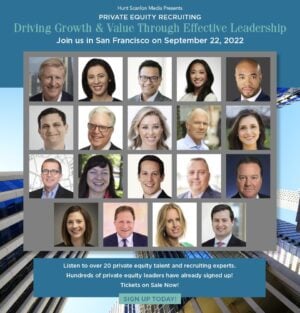Payrolls Rise Higher than Expected in May

June 3, 2022 – Employment rose by 390,000 in May as the U.S. unemployment rate was unchanged at 3.6 percent, according to the most recent U.S. Bureau of Labor Statistics report. Notable job gains occurred in leisure and hospitality, in professional and business services, and in transportation and warehousing. Employment in retail trade declined. The number of unemployed persons was essentially unchanged at 6.0 million.
Among the major worker groups, the unemployment rate for Asians declined to 2.4 percent in May. The jobless rates for adult men (3.4 percent), adult women (3.4 percent), teenagers (10.4 percent), Whites (3.2 percent), Blacks (6.2 percent), and Hispanics (4.3 percent) showed little or no change over the month. Among the unemployed, the number of permanent job losers remained at 1.4 million in May. The number of persons on temporary layoff was little changed at 810,000. Both measures are little different from their values in February 2020. In May, the number of long-term unemployed (those jobless for 27 weeks or more) edged down to 1.4 million. This measure is 235,000 higher than in February 2020. The long-term unemployed accounted for 23.2 percent of all unemployed persons in May.
In May, 7.4 percent of employed persons teleworked because of the coronavirus pandemic, down from 7.7 percent in the prior month. These data refer to employed persons who teleworked or worked at home for pay at some point in the four weeks preceding the survey specifically because of the pandemic. In May, 1.8 million persons reported that they had been unable to work because their employer closed or lost business due to the pandemic—that is, they did not work at all or worked fewer hours at some point in the four weeks preceding the survey due to the pandemic. This measure is little changed from the previous month. Among those who reported in May that they were unable to work because of pandemic related closures or lost business, 19.9 percent received at least some pay from their employer for the hours not worked, also little different from the prior month.
“Despite the slight cooldown, the tight labor market is clearly sticking around and is shrugging off fears of a downturn,” said Daniel Zhao, Glassdoor’s senior economist. “We continue to see signs of a healthy and competitive job market, with no signs of stepping on the brakes yet.”
“In order to win the war for talent in an incredibly tight labor market, employers must think differently about how they are attracting workers,” said Karen Fichuk, CEO, Randstad North America and Randstad N.V. executive board member. “We are having these difficult conversations every day and helping C-suite clients reimagine decades-old HR policies that do not meet new worker expectations for purpose, belonging, and flexibility. This is how we will increase the labor participation rate and bring untapped and overlooked talent pools like caregivers and early retirees back into the workforce, and it is how we can ensure our post-pandemic economic recovery remains robust and durable even in uncertain economic times.”
Where Job Growth Occurred
- Employment in leisure and hospitality increased by 84,000 in May, as job growth continued in food services and drinking places (+46,000) and accommodation (+21,000). Employment in leisure and hospitality is down by 1.3 million, or 7.9 percent, compared with February 2020.
- Employment in professional and business services rose by 75,000 in May. Within the industry, job gains occurred in accounting and bookkeeping services (+16,000), computer systems design and related services (+13,000), and scientific research and development services (+6,000). Employment in professional and business services is 821,000 higher than in February 2020.
- In May, transportation and warehousing added 47,000 jobs. Employment rose in warehousing and storage (+18,000), truck transportation (+13,000), and air transportation (+6,000). Employment in transportation and warehousing is 709,000 above its February 2020 level.
- Employment in construction increased by 36,000 in May, following no change in April. In May, job gains occurred in specialty trade contractors (+17,000) and heavy and civil engineering construction (+11,000). Construction employment is 40,000 higher than in February 2020.
- In May, employment increased by 36,000 in state government education and by 33,000 in private education. Employment changed little in local government education (+14,000). Compared with February 2020, employment in state government education is up by 27,000, while employment in private education has essentially recovered. Employment in local government education is down by 308,000, or 3.8 percent, compared with February 2020.
- Employment in healthcare rose by 28,000 in May, including a gain in hospitals (+16,000). Employment in healthcare overall is 223,000, or 1.3 percent, lower than in February 2020.
- Manufacturing employment continued to trend up in May (+18,000). Job gains occurred in fabricated metal products (+7,000), wood products (+4,000), and electronic instruments (+3,000). Employment in manufacturing overall is slightly below (-17,000 or -0.1 percent) its February 2020 level.
- Wholesale trade added 14,000 jobs in May, including gains in durable goods (+10,000) and electronic markets and agents and brokers (+6,000). Employment in wholesale trade is down by 41,000, or 0.7 percent, compared with February 2020.
- Mining employment increased by 6,000 in May and is 80,000 higher than a recent low in February 2021. Employment in retail trade declined by 61,000 in May but is 159,000 above its February 2020 level. Over the month, job losses occurred in general merchandise stores (-33,000), clothing and clothing accessories stores (-9,000), food and beverage stores (-8,000), building material and garden supply stores (-7,000), and health and personal care stores (-5,000).
- In May, employment showed little change in other major industries, including information, financial activities, and other services.
Related: Major Paradigm Shifts Coming Out of the Coronavirus Crisis
Contributed by Scott A. Scanlon, Editor-in-Chief; Dale M. Zupsansky, Managing Editor; and Stephen Sawicki, Managing Editor – Hunt Scanlon Media













